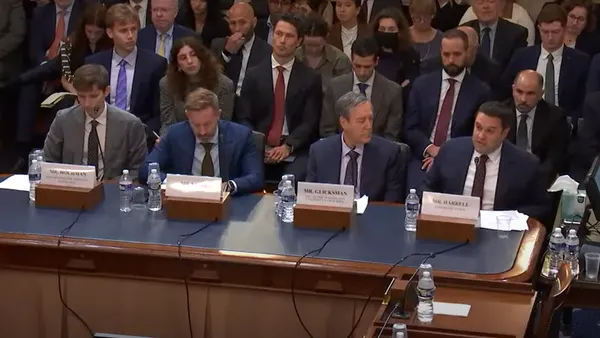Three to four decades. That’s how long some utilities have been turning to Demand-Side Management (DSM) programs to deliver value – primarily through enhanced energy savings – to customers, to the grid, and to society at large.
Yet as utilities grapple with the twin challenges of decarbonizing existing supplies while rapidly building out new ones, DSM is being reshaped as a powerful new tool – Advanced DSM: one that can not only reduce demand, but also shape it and even grow it in ways that are beneficial to meeting both economic and environmental goals.
Advanced DSM – which focuses almost exclusively on reducing demand – is not revolutionary as much as evolutionary: the addition of load SHAPing began in earnest less than a decade ago, and the addition of load BUILDing in just the past couple of years.
So, what exactly is Advanced DSM? Grounded by our work with utilities, governments and regulators across the US and Canada, Dunsky views Advanced DSM as expanding traditional DSM’s goals (beyond just efficiency), its means (beyond just rebates or other incentives), and its outcomes (beyond avoided costs of new supply). While traditional DSM was considered a static load modifier, Advanced DSM is a dynamic, flexible and scalable resource.

Expanded Goals: BEYOND EFFICIENCY
Advanced DSM expands beyond efficiency to include flexible loads (aka demand response), behind-the-meter (BTM) solar PV and storage, and beneficial electrification (of vehicles, heating and industry). The context for these changes is jurisdiction-specific, yet most have in common the drive to leverage new technology to improve energy affordability, reduce GHG emissions, minimize peak demand impacts of electrification, alleviate grid constraints through Non-Wire Alternatives (NWAs), and keep pace with changing customer preferences.
While some will debate the merits of grouping Energy Efficiency alongside other customer-side distributed energy resources (DERs), at Dunsky we see two compelling reasons for doing so. First, it recognizes that in some cases one measure (e.g. smart thermostats) can provide both energy efficiency and load flexibility benefits. And second – and arguably most important – it recognizes that in all cases, there is only one customer behind that meter.
And anyone who’s been around long enough in DSM knows that engaging with customers – not finding new technologies – is often the greatest challenge to overcome.
Expanded Means: BEYOND REBATES
In a twist of irony, legislated codes and standards have long been viewed by many DSM program administrators as impediments to their programs’ measurable success. That’s because by raising efficiency baselines, tighter rules reduce the market potential for ‘above code’ savings that voluntary DSM programs can claim.
But while the means may involve different players, their purpose – cost-efficient MWs and MWhs – is the same. The siloing of voluntary and mandatory measures needs to end.
With this in mind, and within a broader energy transition perspective, Dunsky has been working with clients – utilities and governments alike – to consider shifts to DSM regulatory frameworks: from the traditional ‘Hope and Help’ (i.e. set goals and offer voluntary incentives to encourage change) toward what we term ‘Standards and Support’.
The latter couples new or forthcoming regulatory requirements (e.g. tighter codes, building energy performance standards, clean heat standards) with supportive programs (e.g. information, capacity building, financing and, yes, incentives) in a virtuous cycle that helps customers and markets prepare, transition and comply with them, in turn making their adoption more palatable.
For example, for one government client, Dunsky helped design a Mandatory Building Performance Standard (MBPS) that, when it comes into effect, will require all C&I buildings to improve their energy and carbon intensity incrementally over the coming 20 years. We’re now working with the utility to design an innovative suite of measures to support building owners’ ability to comply with the new requirements.
This approach ensures that customers will have the means to comply, thus enabling adoption of the strict regulations. It supports the pace of change needed to meet the region’s decarbonization goals while also providing certainty to the market.
In a sense, this is classic market transformation. But achieving it – and its much larger potential benefits – requires a new conversation between utilities, their regulators and governments. One in which DSM programs could shift their focus away from trying to sway a small slice of the market to go above today’s mandatory baselines, and instead focus on (and be at least partially credited for) easing the adoption of transformative standards that can apply to all.
Similarly, most DSM regulatory frameworks today do not consider rate design as an eligible DSM measure. Yet as utilities continue to modernize their grids and leverage increasingly-advanced metering infrastructure (AMI), Dunsky sees an opportunity for Advanced DSM to leverage rate design for the benefit of customers and the grid. Compelling price signals can be used to encourage beneficial (and only beneficial) electrification, load shifting toward off peak periods (e.g. critical peak pricing, time of use rates), and utility access to BTM flexible loads (e.g. managed EV charging, battery storage).
While many utilities are developing, testing and rolling out new rate design options for customers, we still see limited integration of those designs within DSM programs and frameworks.
In Dunsky’s view, packaging traditional DSM offers with new tools – including but not limited to rate design – can provide a more customer-centric approach. Integrated Advanced DSM solutions can be far more effective than a suite of sometimes-competing initiatives that risk either missing opportunities to support one another or, worse, working at cross-purposes.
Expanded Outcomes: BEYOND “AVOIDED COSTS”
For decades, DSM’s primary value proposition has been its ability to both avoid OpEx and defer CapEx associated with generation, transmission and distribution infrastructure.
Looking forward, Advanced DSM will:
- Continue to AVOID COSTS: Advanced DSM will continue to avoid OpEx and CapEx related to the purchase and/or construction of new power sources to meet load growth.
- Speed DECARBONIZATION: In some regions, the drive to slash emissions from vehicles, heating and industry requires rapid growth of clean power sources, often more rapid than is feasible under current regulatory constraints. There, Advanced DSM can free up clean power, thus accelerating the pace of decarbonization more so than avoiding the costs of new investments that simply cannot be made fast enough.
- Enable ECONOMIC DEVELOPMENT: Similarly, in some regions the advent of massive new power demands – for AI-driven server farms, for IRA-driven re-industrialization or for new activity across the electric vehicle supply chain – simply cannot be met fast enough at the current pace of new, clean power buildout. There, Advanced DSM can free up clean power, thus accelerating the pace of economic development.
Advanced DSM can support other goals as well – from the integration of more low-cost, intermittent renewables (thanks to flexible loads) to energy affordability by enabling more customers to switch to EVs and save at the pump, to savings on home heating bills in equity-deserving communities.
And as the value streams of DSM change, so too must our approach for measuring and evaluating its costs and benefits.
Fortunately, our industry is already making strides in this direction. For example, the benefit-cost analysis framework for DSM, first established in 1983, is being fundamentally transformed by the National Standard Practice Manual for Benefit-Cost Analysis of Distributed Energy Resources (NSPM).
Similarly, and building on the principles defined in the NSPM, Value of DER (VDER) Frameworks are increasingly defining the true value of distributed solar and storage resources, thus minimizing cost shifting and enabling appropriate market compensation. Dunsky has developed VDER assessments in places like Virginia, New Hampshire, Texas, British Columbia and elsewhere, and has seen the clarity it has provided to stakeholders.
As these practices evolve, a number of our clients are beginning to rethink their DSM decision-making frameworks entirely, either seeking more granularity to uncover new benefit streams, looking to more explicitly account for broader policy goals, or both.
UNLOCKING DSM’S FULL POTENTIAL
Putting this all together, we see the future of DSM evolving:
- Goals: from siloed technologies and programs to integrated solutions
- Means: from “hope and help” market efforts to “standards and support”, a two-track strategy for broad, market transformation
- Outcomes: from avoiding OpEx and CapEx to achieving a broader set of policy goals
To unlock Advanced DSM’s full potential will require substantial shifts in current policies and practices. Dunsky sees three priority areas for change:
- Planning and regulatory. While integrated potential studies, Value of Solar studies and the NSPM are laying the groundwork for modelling and evaluating this broader version of DSM, other critical elements of DSM regulatory frameworks – including target setting, measure/program eligibility, attribution rules and performance incentive mechanisms – will need adjustments for utilities to be able and motivated to harness that potential.
- Program design and delivery. Expanding DSM beyond energy efficiency requires new thinking about program design and delivery. Behind the meter technologies such as EV charging, battery storage, and smart controls are changing more quickly than traditional efficiency measures, presenting both risks and opportunities for program design. Additionally, leveraging DSM for load flexibility requires programs that are focused on longer term relationships and engagement with participants, and not just influencing one-time purchase decisions. Unlocking DSM’s full potential requires program designs that are more innovative, more dynamic, less transactional, and more customer centric.
- Policy collaboration. Utility DSM programs do not operate in a vacuum. Other market actors – including governments, municipalities, non-profits and the private sector – are taking action (through policies, legislation and competitive markets) to influence change in how consumers and businesses use energy. We need to focus less on creating silos of accountability and accounting (who does what? who gets credit?) and focus more on how to integrate and coordinate these efforts to reduce costs, minimize customer confusion and amplify impacts.
Of course, Rome wasn’t built in a day. Nor too does Advanced DSM need to encompass all of the changes noted above, all at once. But in our experience, every region holds opportunity for progress in one area or another. The first step is discussing what those achievable opportunities are and developing a plan to achieve them.
Interested in learning more? Reach out to schedule a discussion on how your organization can leverage Advanced DSM to its fullest. [email protected]










